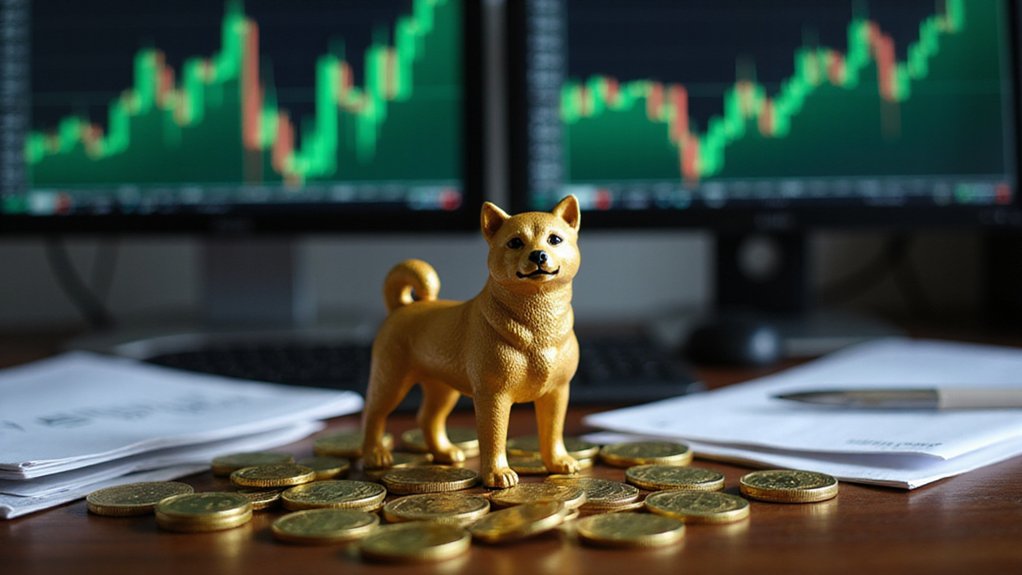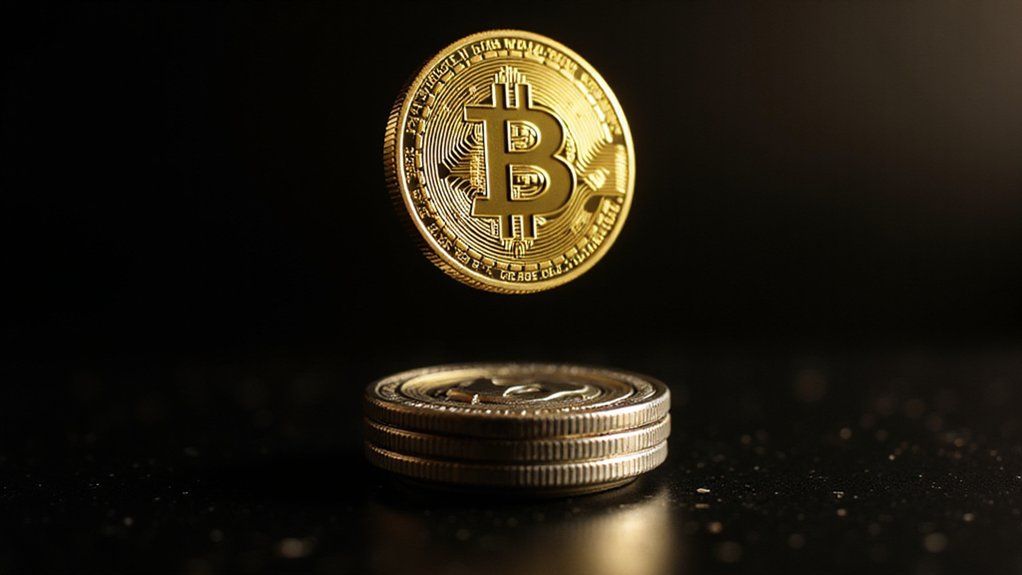While most serious investors were busy analyzing price-to-earnings ratios and studying quarterly earnings reports, a cryptocurrency featuring a Shiba Inu meme managed to stage one of the most improbable financial performances of the digital asset era.
Dogecoin’s meteoric ascent—from virtually worthless tokens to a cryptocurrency commanding serious attention—presents a fascinating case study in modern market dynamics. However, the notion that institutional buying and ETF hysteria drive DOGE’s remarkable trajectory appears largely unsupported by available evidence. The data reveals a more prosaic truth: this particular digital asset’s price movements correlate far more closely with retail investor enthusiasm and social media momentum than with traditional institutional accumulation patterns.
Current market forecasts paint an intriguingly optimistic picture, with 2025 predictions ranging from $0.14 to $1.58 (averaging around $0.25), extending to projected averages of $4.63 by 2030. These projections suggest a potential 26.18% return through 2025’s end—respectable, if hardly revolutionary by cryptocurrency standards. Yet nowhere in this bullish outlook do institutional fingerprints appear prominently.
Dogecoin’s projected $4.63 average by 2030 reveals retail enthusiasm driving growth, not institutional investment strategies.
The absence of confirmed DOGE-specific ETF filings or launches further undermines the “wild ETF hype” narrative. Unlike Bitcoin’s institutional adoption story, complete with corporate balance sheet allocations and regulatory ETF approvals, Dogecoin‘s price surges trace back to celebrity endorsements and online community fervor rather than formal financial instruments. Investors approaching DOGE should employ risk management strategies that emphasize diversification and only investing disposable income, given the volatile nature of meme-based cryptocurrencies.
Technical indicators tell their own story: the Fear & Greed Index sits neutrally at 53, while the RSI approaches overbought territory at 67.77. Volatility remains moderate at 8.5%, suggesting typical altcoin behavior rather than the dramatic swings associated with institutional rotation or ETF-driven capital flows.
Historical analysis reveals DOGE’s price spikes coinciding with media attention and high-profile endorsements throughout 2014, 2017, and particularly 2021—periods characterized more by retail FOMO than institutional sophistication. The cryptocurrency’s evolution from joke to legitimate investment vehicle reflects broader market democratization, where memes can apparently generate genuine financial returns.
Perhaps most tellingly, daily 2025 fluctuations between $0.20-$0.33 demonstrate ongoing volatility patterns consistent with retail-driven markets rather than the steadier accumulation patterns typically associated with institutional investment strategies. Recent trading data shows DOGE experiencing a significant downturn, dropping from 0.32 cents in late December 2024 to approximately 0.16 cents by mid-April 2025, representing a decline of roughly 50%.








